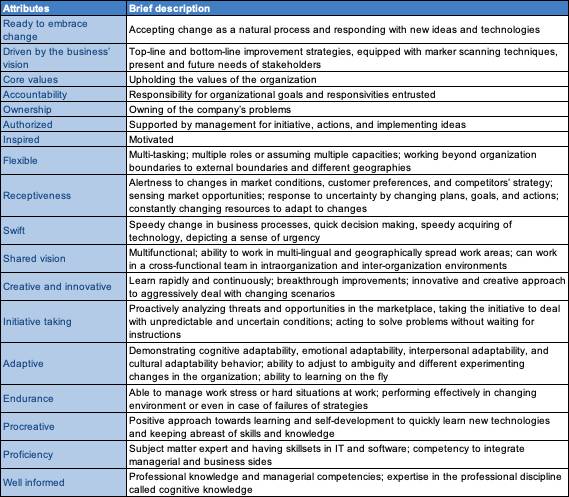The VUCA world and Agility that need HRM support

Image source: Dylan Gillis | Unsplash
The Great Depression of 1929-39, the OPEC oil price shock in 1973, the Asian credit crisis in 1997, and the Great Recession of 2007-08 — these are just some of the most distressing downturns in economic history, and the current pandemic is adding to this list. Apart from these crises, businesses — however small or big — are continuously struggling with the ever-evolving technology. Companies need to deal with disruptive innovations, dynamic consumer likings, pricing, quality, and a high degree of satisfaction in user experience. Such risks arising out of unpredicted conditions coupled with traditional trade risks put a business on tenterhooks with the obvious threat of going into oblivion and give them no choice but to strive for excellence and agility to survive.
The dictionary meaning of agility is quickness, dexterity, alertness, swiftness, responsiveness. While there isn’t a single comprehensive definition vetted by everyone, some authors defined agility as one of the key organizational characteristics that need to be mastered to stay adaptive and competitive in turbulent markets. In the context of the current pandemic and the uncertainty it brings, it calls for an organizational response to the unproductive environment and the ability to convert threats into opportunities. However, the concept of agility was mainly associated with manufacturing industries that too around managing demand-supply variation.
To cope up with a turbulent environment, organizations should have the ability to anticipate the direction and degree of change in a proactive manner. As such, organizational structures should be designed so that they permit greater agility, through flexible response. Enablers like leadership, strategy, people, and business processes play an important role in developing organizational agility. These enablers need to work in cohesion to enhance the agile components of the organization.
The prevailing VUCA (volatility, uncertainty, complexity, and ambiguity) conditions trigger dynamic and continuously changing environments, impacting the organizations. As a response, organizations need to develop the ability to innovate and acquire new knowledge so as to achieve agility for survival. The strategy around flexible HRM empowers organizations or firms to respond to external customers, competitive positions, technology selection and dissemination, creativity, and cycle time reduction. The focus in this paper is on the intangible resource (i.e. human resource) and the important flexibility dimensions of human resource management (HRM).
HRM strategy on agility
The HRM strategy should support reactive agility (organization’s responsiveness), proactive agility (organization’s effectiveness), and innovative agility (organization’s resourcefulness). HRM strategy is required to support the ever-dynamic market so that organizations can respond and achieve decent performance. Organizations paying attention to the HR strategy have been proved more profitable than others.
The key attributes of agility in an organization that HRM should try to focus on and promote in the organization through key leaders are tabulated below. This is not a comprehensive list but can be developed depending upon the organization. As a next step, one should have measures in place around these attributes so that agility can be assessed if not measured. All key frameworks like BEM/EFQM, CMMI, or BSC aim at providing resilience to organizations; therefore, while developing any such framework these attributes can be guiding points.

Image source: The KPI Institute
The challenge to organizations today is how to imbibe and implement agility drivers and later how to judge the organization’s agility. One possible approach is to develop an agility maturity model in line with a capability maturity model in template form. The template itself needs to be dynamic and able to change with environmental factors. The table above is just guidance to look around such agility drivers so that it can be helpful in developing the template.
Strategic HR plays an important part to ensure that the people in the organization understand and support such agility adoption. In fact, the versatility and the adaptive skills of a person are assessed even as early as the talent acquisition stage as this is an important dimension when recruiting an individual into the organization. The employees’ performance management system (PMS) developed by HR should pay greater attention to agility factors in a person rather than just task accomplishment levels. To conclude, understanding and navigating the complex eco-system in which organizations operate is crucial; at the same time, HR should play a bigger role in developing an agile workforce that can’t be just left to line functions.

Tags: Agility, HRM, HRM strategy on agility, human resource management, Human Resources, Organizational Strategy, VUCA





